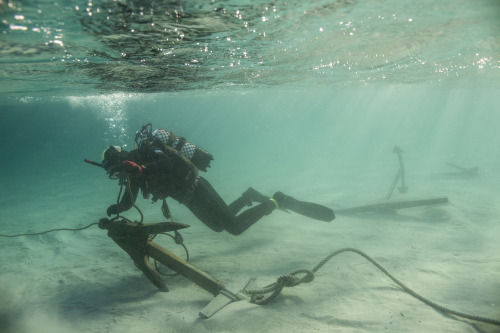
ANAMED Post-Doc fellow Greg Votruba writes about his World Anchors Reconstruction and Experimentation Project fieldwork in Urla, İzmir…
We are both studying and living history amongst this seemingly ceaseless progression of mind boggling political events, within the context of human triumphs and tragedies. I would like to wish my Turkish colleagues well, who seem to be taking the brunt of these. Perhaps in hope of furthering understanding, or simply inspired by the challenges we face, we continue to stay focused on our work, and I am happy to report that my World Anchors Reconstruction and Experimentation Project (WAREP) fieldwork in Urla, İzmir, shared in directorship with a well-appreciated colleague and teacher, Osman Erkurt of the 360 Degree Research Group, turned out to be very productive. This, I might say, was greatly facilitated by the encouragement of the regional researchers Prof. Hayat Erkanal of Ankara University and Prof. Cengiz Metin of Ege University.
Despite uncharacteristically windy days, problematic particularly for research in the sea, we managed to pull-test (for holding resistance measurement) a group of anchors at both Demircili, where there is a sand seafloor, and İskele, where the seafloor consists primarily of grass. This is the second group of anchors tested like this. It is rather difficult to describe in a short format the complex preparation of producing and testing ancient anchor designs in the sea, but I can tell you that I am relieved. The work was completed with the participation and companionship of Murat Tosun, Neslihan Sumerval, and Mustafa Kasapoğlu rounding out our team.
Among the discoveries, I can now discuss general and specific aspects of the functioning and efficiency of Byzantine and Medieval ‘T’, ‘Y’, and subsequent upward-arm anchors, the focus of my ANAMED fellowship research. For now I, narcissistically, provide an image of myself preparing several of the anchors during the pull-tests at Demircili, thanks to Murat’s photographic skill. Otherwise, you must remain calm, the results must await another ANAMED workshop in a few months!

Touring the rope workshop in Tire, İzmir, and its long stretch of land fitted with supports and spacers, along with a rusted spinning machine.
Additionally, we also found an opportunity to visit the Izmir district center of Tire. Tire is both a beautiful city with well-preserved Medieval architecture, but also one where several ancient arts are still practiced, including the production of felt and leather. However, particularly important for us is its renowned history of producing rope during the Ottoman Empire, and rope is, of course, an essential element of anchoring. When we arrived to the last remaining workshop, alas, the raw grass fiber material had not yet arrived from Bangladesh so we could not observe production. But we were given a tour of the site which included a workshop with various spinning machines and a 300-meter-long strip of land fitted with supports for running the rope elements back and forth.

